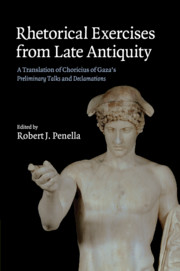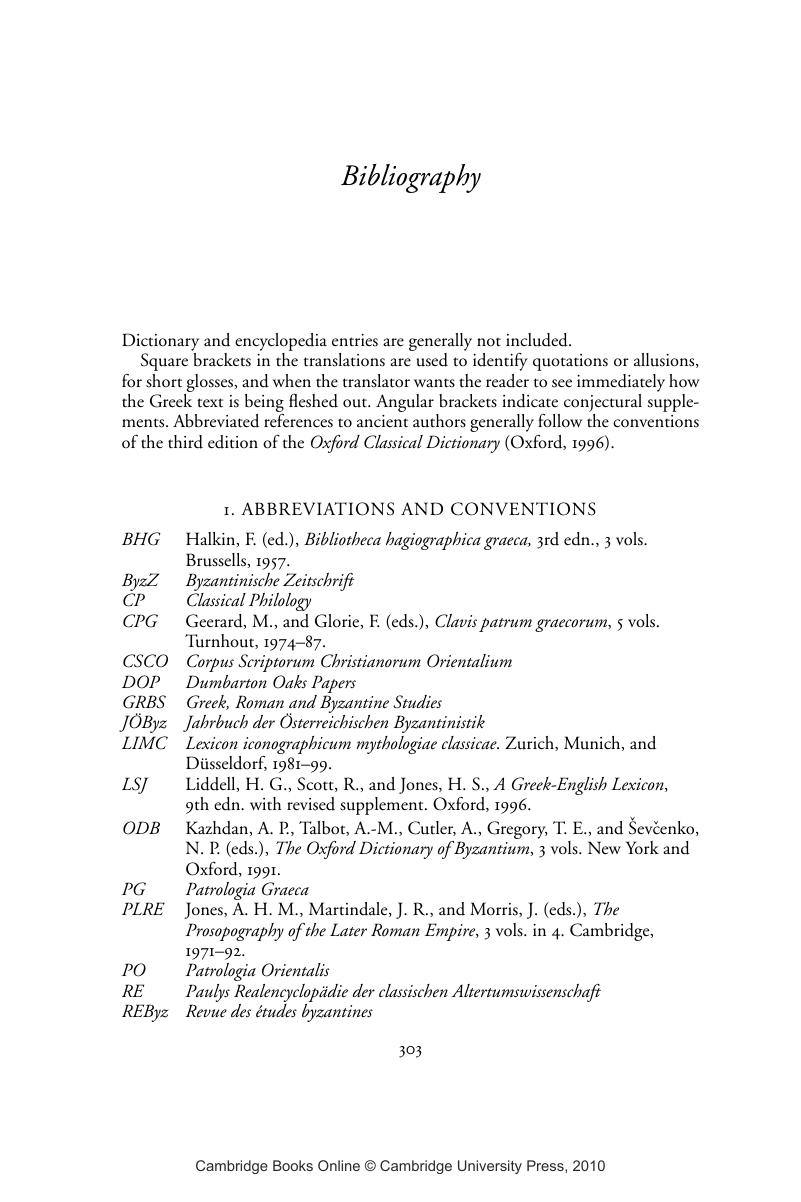 Rhetorical Exercises from Late Antiquity
Rhetorical Exercises from Late Antiquity Bibliography
Published online by Cambridge University Press: 29 January 2010
Summary

- Type
- Chapter
- Information
- Rhetorical Exercises from Late AntiquityA Translation of Choricius of Gaza's Preliminary Talks and Declamations, pp. 303 - 319Publisher: Cambridge University PressPrint publication year: 2009


